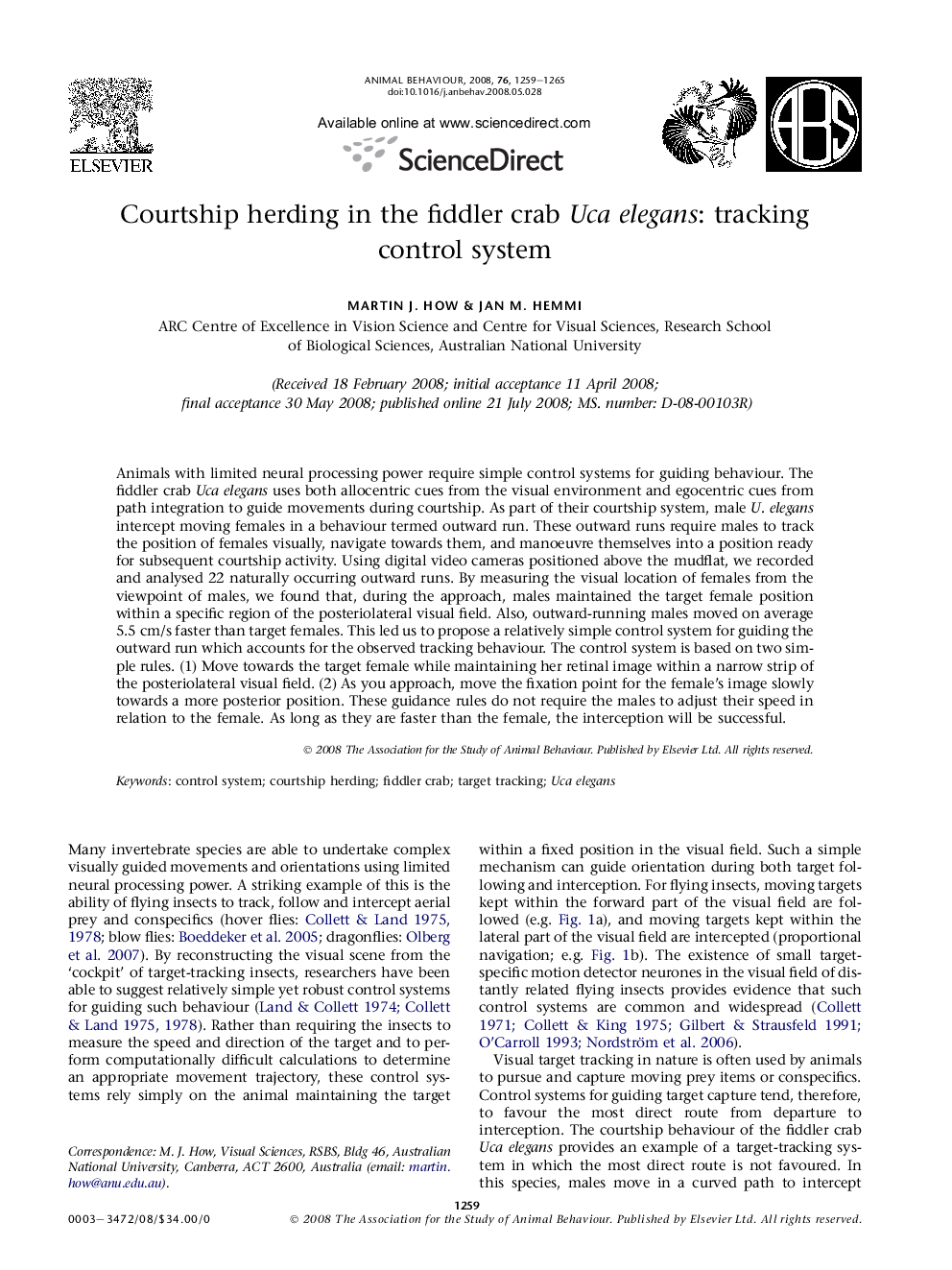| کد مقاله | کد نشریه | سال انتشار | مقاله انگلیسی | نسخه تمام متن |
|---|---|---|---|---|
| 2418764 | 1104356 | 2008 | 7 صفحه PDF | دانلود رایگان |

Animals with limited neural processing power require simple control systems for guiding behaviour. The fiddler crab Uca elegans uses both allocentric cues from the visual environment and egocentric cues from path integration to guide movements during courtship. As part of their courtship system, male U. elegans intercept moving females in a behaviour termed outward run. These outward runs require males to track the position of females visually, navigate towards them, and manoeuvre themselves into a position ready for subsequent courtship activity. Using digital video cameras positioned above the mudflat, we recorded and analysed 22 naturally occurring outward runs. By measuring the visual location of females from the viewpoint of males, we found that, during the approach, males maintained the target female position within a specific region of the posteriolateral visual field. Also, outward-running males moved on average 5.5 cm/s faster than target females. This led us to propose a relatively simple control system for guiding the outward run which accounts for the observed tracking behaviour. The control system is based on two simple rules. (1) Move towards the target female while maintaining her retinal image within a narrow strip of the posteriolateral visual field. (2) As you approach, move the fixation point for the female's image slowly towards a more posterior position. These guidance rules do not require the males to adjust their speed in relation to the female. As long as they are faster than the female, the interception will be successful.
Journal: Animal Behaviour - Volume 76, Issue 4, October 2008, Pages 1259–1265